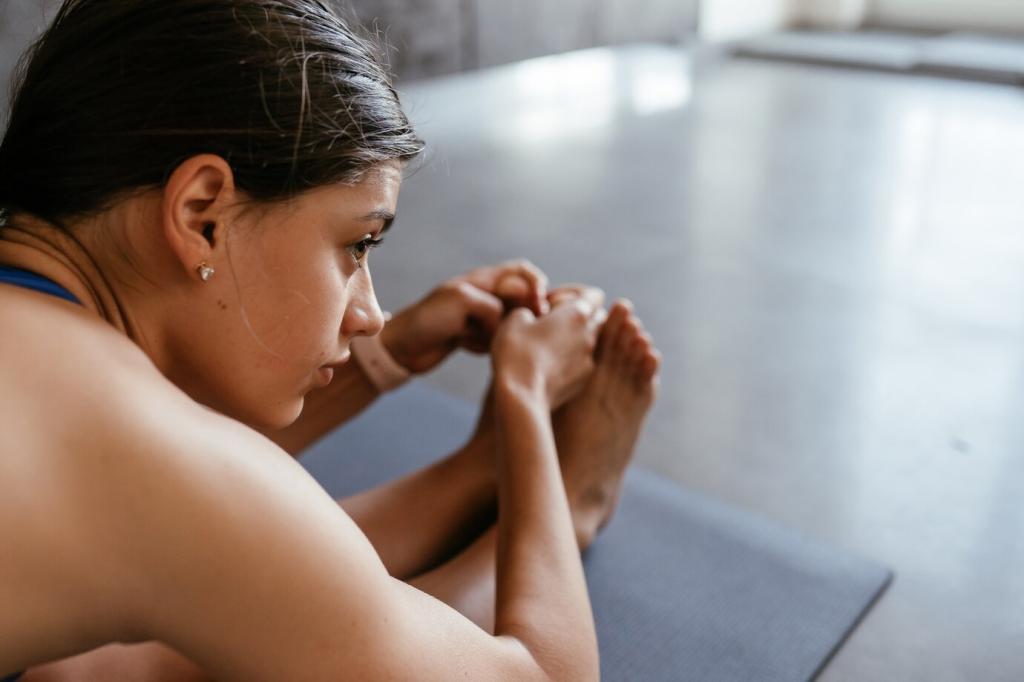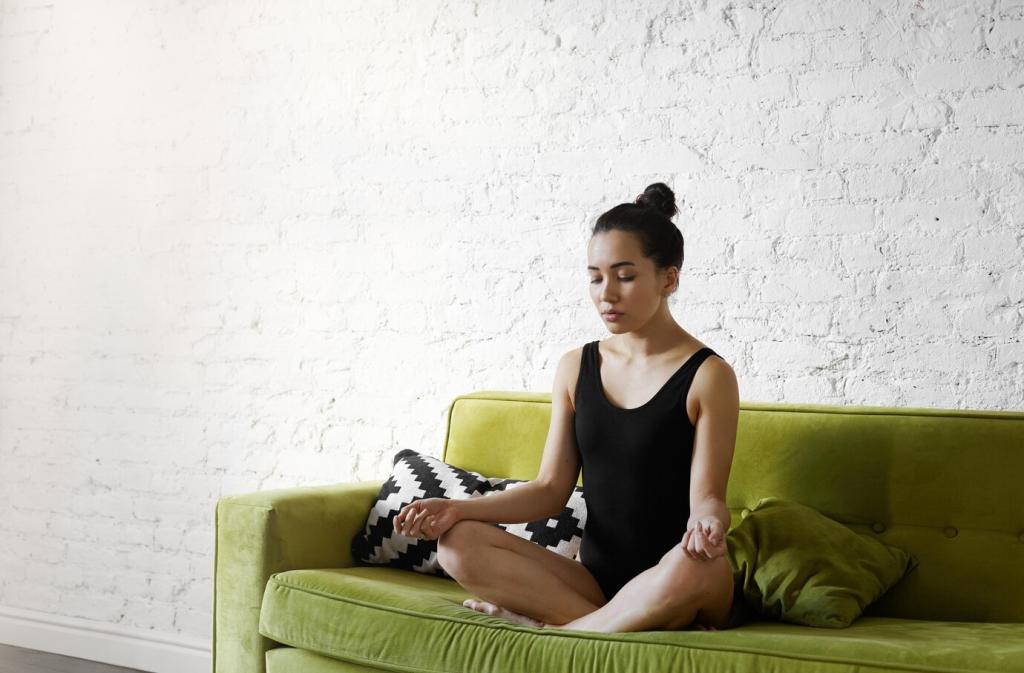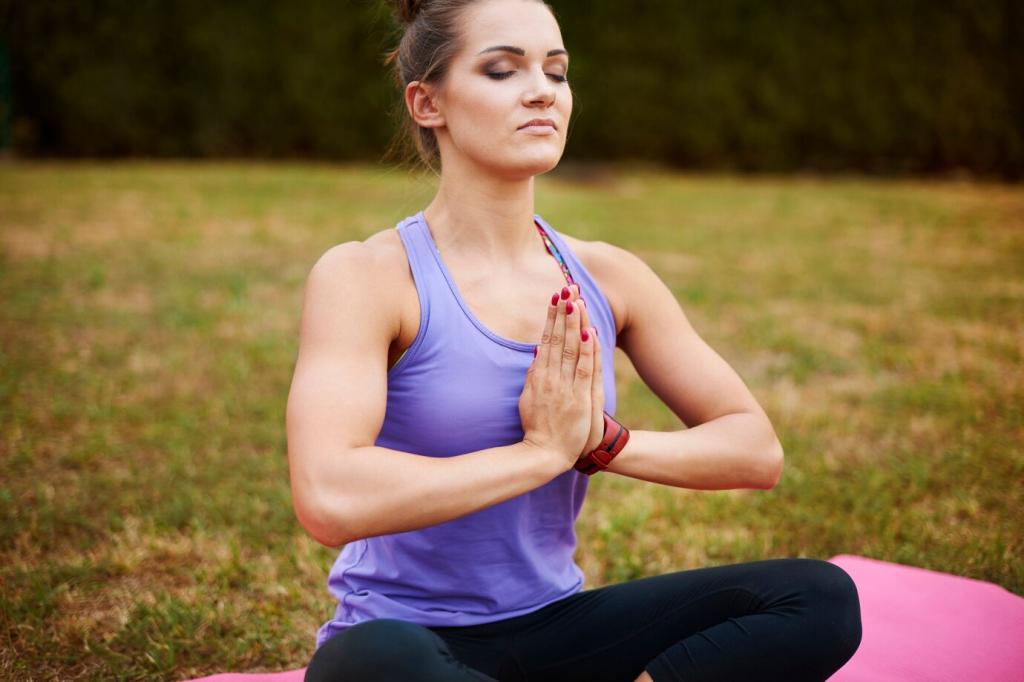Center Before You Sweat: Mindfulness Techniques for Your Pre-Workout Routine
Chosen theme: Mindfulness Techniques for Pre-Workout Routine. Ground your body and mind in minutes before training. Explore breathwork, micro-meditations, and focus cues that sharpen form, reduce risk, and transform warm-ups into a repeatable ritual. Subscribe for weekly techniques and share your pre-workout check-in so others can learn from your routine.

Calm the Sympathetic Surge
Before training, your system often spikes with anticipation. Slow, extended exhales reduce cortisol, improve heart rate variability, and settle jitters. This calm clarity lets you feel subtle cues—bar path, foot contact, joint position—so your first set is cleaner, safer, and more purposeful. Comment if longer exhales help you focus.

Prime Neuromuscular Precision
Mindfulness nudges the prefrontal cortex online, improving attention and motor planning. When you notice breath and posture, small stabilizers engage sooner, technique tightens, and movement becomes smoother. Over time, this mindful priming compounds, boosting skill acquisition and consistency across workouts. Share your favorite precision cue below.

Shift from Outcome to Process
Instead of chasing numbers, anchor to controllables: breath rhythm, setup, first rep quality. This process focus reduces anxiety and preserves energy for what matters. Athletes report fewer rushed warm-ups and steadier pacing. What process cue keeps you present when the gym gets noisy and competitive?


Breathwork Protocols to Prime Performance
Inhale four counts, hold four, exhale four, hold four. Repeat for one to three minutes. The geometric rhythm steadies attention and subtly firms your midline. Athletes like pairing each inhale with spinal length and each exhale with shoulder softening. Try two rounds and note your focus score in the comments.
Breathwork Protocols to Prime Performance
Take one deep nasal inhale, sip a second shorter inhale, then long, unhurried exhale through the mouth. Two or three cycles lower arousal quickly. Use it after traffic, before your first warm-up set, or between supersets. If you feel your jaw unclench, you did it right. Share when it helps most.
Quick Body Scans That Actually Help
Close eyes, sweep attention from scalp to feet. Notice jaw, neck length, shoulder height, ribcage width, hip level, knee tracking, toe pressure. Label sensations neutrally—warm, tight, heavy—then adjust one thing only. Small corrections accumulate. Try this before your first warm-up set and share what surprised you today.
Quick Body Scans That Actually Help
Pick three joints relevant to today’s session. For squats, scan ankles, hips, and thoracic spine. Ask: restricted, balanced, or compensating? Perform one mindful drill per joint, synced to slow breathing. Reassess quickly. This checkpoint keeps warm-ups intentional, not automatic. Comment your three joints and your go-to drill combo.
Quick Body Scans That Actually Help
Open a notes app and write a one-sentence map: location, sensation, and severity. Example: left hip, pinchy at end-range, five of ten. After warm-up, re-rate. Tracking over weeks reveals patterns tied to sleep, stress, or shoes. Invite a friend to log with you and compare trends respectfully.
Micro-Meditations for the Locker Room
Cue-Linked Mindfulness
Attach mindfulness to a routine cue: when lacing shoes, breathe five slow cycles; when chalking hands, soften shoulders; when gripping the bar, relax jaw. This piggybacks on habits you already have, making consistency easy. What everyday cue could anchor your mindful minute? Share it and inspire someone else.
Soft-Focus Wall Gaze
Stand two meters from a wall, widen your visual field, and let peripheral vision soften. This reduces tunnel vision and quiets mental noise. Keep breath slow and posture tall. Sixty seconds later, most people feel steadier. Try it before heavy sets and tell us whether distractions faded for you.
Gratitude Reframe for Nerves
Name three things you’re grateful for related to training: a pain-free knee, a teammate’s encouragement, or simply having time today. Gratitude shifts stress toward opportunity. Write them in your notes and revisit after your session. Drop one gratitude in the comments to encourage someone starting out shaky.
Visualization That Feels Real
Close your eyes and imagine the exact grip texture, the floor under your feet, the breath before the lift, and the smooth drive. Layer sound and temperature details. Two realistic run-throughs can tighten technique more than five distracted warm-up reps. What sensory detail felt most vivid for you today?

Mindful Mobility Warm-Up
Perform ninety-ninety switches or lunges with nasal inhales into the belly and long mouth exhales during end-range. Keep shoulders soft and pelvis stable. Count three breaths per position. Note how each exhale invites deeper space. Tell us whether breath made your hips feel more available during your first working set.
Mindful Mobility Warm-Up
Use controlled external rotations or wall slides at a three-one-three tempo: slow up, pause, slow down. Match breath to movement. Notice scapular glide rather than forcing range. This mindful pace teaches control, not just flexibility. Comment which tempo helps you feel stable without fatigue before pressing overhead.


Data, Stories, and Staying Consistent
Anecdote: The Two-Minute Reset
A sprinter in our community felt scattered before blocks. Two minutes of soft-focus gaze and physiological sighs turned jitters into vibrant readiness. Times improved modestly, but false starts vanished. The athlete called it “quiet aggression.” Try a two-minute reset this week and report back your before-and-after feel.

